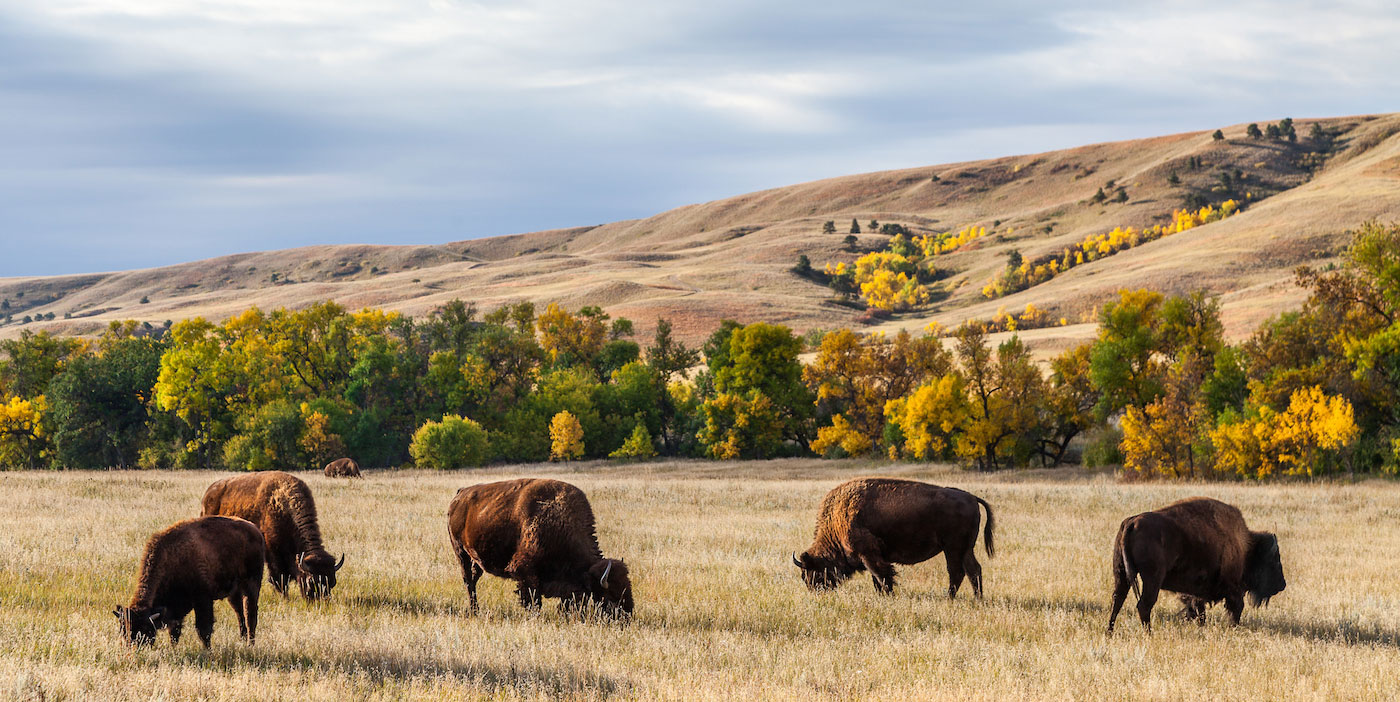
North Dakota
At President Thomas Jefferson’s behest, Meriwether Lewis and William Clark applied their exploration expertise in 1804 to the geography that would later become North Dakota. They charted their path north along the Missouri River with the help of local Native American guides. Today visitors can still follow in their footsteps along the Lewis and Clark Trail, which stretches from Washington, D.C., to Washington State and passes through North Dakota’s capital, Bismarck.
This historic expedition linked the region to the growing United States. In 1861, President James Buchanan formed the Dakota Territory, which included today’s states of North Dakota, South Dakota, Montana and Wyoming. On Nov. 2, 1889, North Dakota was admitted to the Union – the same day as South Dakota. President Benjamin Harrison did not reveal which state’s proclamation he signed first, but alphabetical order positions North Dakota as the 39th state.
North Dakota is also the adopted home of President Theodore Roosevelt, who came to the land to hunt and stayed to ranch. His experience in North Dakota shaped his outlook on land and resource conservation, and today the state honors his memory through the Theodore Roosevelt National Park, which hugs a good portion of the state’s western edge.
Since before its statehood, North Dakota’s land has been hospitable to ranching and farming, and today it is consistently the United States’ largest or second largest producer of 16 different commodities, including flaxseed, canola, durum wheat, spring wheat and dry edible beans. Further, the state has actively sought new economic activity and job opportunities in value-added agriculture. Beef, dairy cattle and hogs are also important to its agricultural economy.
While agriculture is important to North Dakota’s economy and many North Dakotans’ way of life, the state has also been working to expand and diversify its economy, most notably in the energy and high-technology sectors. In fact, the state held the first-place ranking in the U.S. Chamber of Commerce’s Enterprising States study in Science, Technology, Engineering and Mathematics (STEM) job growth for three consecutive years starting in 2012.
In 2002, the state implemented EmPower ND, a comprehensive energy plan for the state initiated by then-Governor Hoeven that includes all of North Dakota’s vast energy resources as well as a conservation component. Today, North Dakota stands as an energy powerhouse and one of the largest energy producing and exporting states in the nation. Currently, North Dakota produces more than one million barrels of oil a day, ranks as the second largest oil and gas producing state in the country and eleventh in per capita wind-generated electricity.
Such policies have resulted in the expansion and diversification of North Dakota’s economy, providing more than 100,000 new jobs and greater prosperity for its residents. The state has had the lowest unemployment rate in the nation since 2009 and has had the fastest growing economy for four straight years. North Dakota’s exports, personal income and wages have also grown faster than the national average, with its personal income now ranked second in the nation.
As a North Dakota native, Senator Hoeven is proud to represent his state, with its impressive frontier history, awe-inspiring vistas, and an innovative economy that brims with promise for the future. North Dakota’s economy is arguably the strongest in its history, and it serves as an example to our nation as it works to bolster its own economic growth and security.
State Info
- Capital City: Bismarck
- Statehood: November 2, 1889
- Area Code: 701
- Border States: Minnesota, Montana, South Dakota
- International Border: Canada
- Motto: “Liberty and Union Now and Forever, One and Inseparable.”
- Nicknames: Peace Garden State, Flickertail State, Roughrider State
Do you want to . . .
- plan your visit to ND?
- build your business in ND?
- explore the job force in ND?
- learn about ND agriculture?
- fish or hunt in ND?
State Symbols
- Beverage: Milk
- Bird: Western Meadowlark
- Dance: Square Dance
- Equine: Nokota Horse
- Fish: Northern Pike
- Flag: Dark blue field with a bald eagle holding an olive branch and a bundle of arrows in its claws
- Flower: Wild Prairie Rose
- Fossil: Teredo Petrified Wood
- Fruit: Chokecherry
- Grass: Western Wheatgrass
- March: Flickertail March
- Tree: American Elm
Famous North Dakotans:
- Dale Brown: Basketball coach, LSU
- James Buchli: Astronaut
- Sitting Bull: Lakota Sioux spiritual leader
- Warren Christopher: Former U.S. Secretary of State
- Ronald N. Davies: Federal Jurist
- Angie Dickinson: Actress
- Josh Duhamel: Actor
- Carl Ben Eielson: Aviator and explorer
- Louise Erdrich: Novelist
- Darin Erstad: MLB player
- Travis Hafner: MLB player
- Phil Jackson: NBA player and coach
- Louis L’Amour: Author and screenwriter
- Jonny Lang: musician
- Peggy Lee: Actress, singer, songwriter
- Roger Maris: Baseball homerun king
- Theodore Roosevelt: U.S. President
- James Rosenquist: Painter
- Sakakawea: Lewis and Clark guide
- Ed Schafer: Former U.S. Sec of Ag and Gov. of ND
- Harold Schafer: Fndr - Gold Seal Company
- Eric Sevareid: TV commentator
- Clyfford Still: Painter
- Bobby Vee: Musician
- Lawrence Welk: Entertainer
- Larry Woiwode: ND’s Poet Laureat
